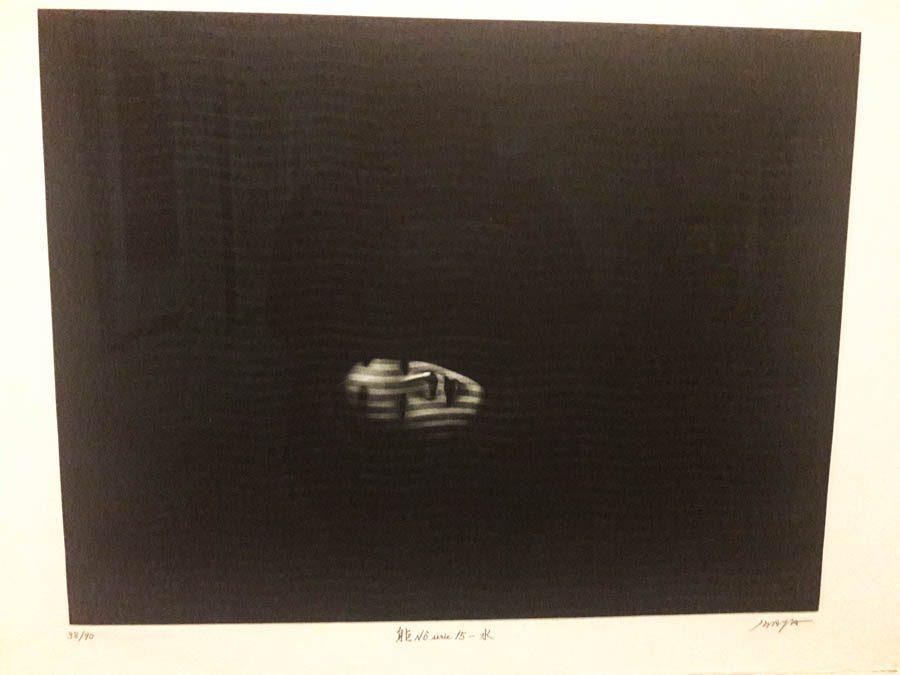Artist: Iwaya Tōru, born 1936
Water, 1990
“Prints such as this mezzotint begin with a copper plate that has had its surface abraded so as to hold ink. Using metal tools, the artist painstakingly inscribes a design by smoothing selected areas of the plate so the ink will not adhere, which creates areas of light. First used in Amsterdam in the second quarter of the 17th century, mezzotint was revived among Japanese artists in the 1950s and 1960s.”*
“The velvety gradations afforded by this technique give images a delicate, otherworldly quality that complements the surrealist imagery of self-trained artist Iwaya Tōru. Iwaya’s image of a Noh mask floating on the surface of water belongs to a larger series using masks of the Noh theater, considered the most rarified form of the Japanese arts. Although their expressions are frozen, Noh masks can convey an infinite range of emotions.”*
This was an interesting piece, because it’s mostly just dark space. The Noh mask is the only subject of the print, so there’s really no way to get distracted by anything else. Despite that, it’s not hard to get lost in this piece. It’s so well made. Iwaya did an excellent job printing the mask, as it looks so smooth.
This print evoked both feelings of hope and despair. If one were to see the mask as sinking in the water, it might be interpreted as giving up and falling into despair. On the other hand, if one were to see the mask as rising to the surface of the water, it could be interpreted as having the strength to continue on and have hope.
